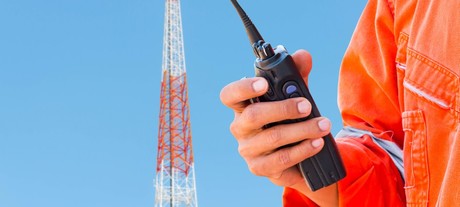Preparing for a disruptive future

In March this year, a simple vote signalled the end for one of the world’s most widely used technologies for saving lives in times of emergency. At the recent 3GPP meetings in Chennai, India, the international standards were completed and approved for the new mission-critical push-to-talk (MCPTT) radio networks.
The implications of this run much deeper than a simple change of standards, and the reverberations will be felt across the sector for years to come.
The old, familiar two-way radio has been a core part of worldwide police and emergency services since it was first used by Australia’s Victorian Police Force in 1923. Since that time, land mobile radio (LMR) has continued to be a transformational technology.
Not only has this technology helped drive numerous productivity improvements throughout the 20th century, but it has also been a pivotal tool for aiding the work of emergency services workers. Car-based radios, and later handheld radios, have become an inseparable part of frontline operations.
Today, LMR is still widely used around the world, and it would be a mistake to underestimate the deep emotional attachment many first responders still have to this ageing but durable and reliable technology. The replacement of LMR will not be simple.
However, the LMR architecture has significant shortcomings. Today, officers in the field need data, and lots of it. It is already common for first responders to use mobile phones, tablets, cameras and IoT devices for a variety of advanced services, such as mapping, video streaming, data analytics, personal health and safety management, and office automation.
The number and variety of use cases is growing fast. These include:
- completing reports and routine forms in the field rather than having to waste time returning to base;
- collecting and cataloguing evidence at source, particularly photographic evidence;
- connecting seamlessly to expert advisors from anywhere in the world;
- viewing video images streamed from a variety of locations, such as street cameras;
- participating in social media to develop a broader situational analysis, rather than being limited to formal information channels;
- using body-worn IoT devices to monitor vital signs, which can be especially valuable for firefighters and mining workers who are exposed to hazardous work environments.
The technical standards are confirmed, and new technologies are already on the market, but the job is far from complete.
The next steps will be as much about leading internal staff and the wider community through the process of change as it will be about delivering transformational technology. This is just the beginning.
Please follow us and share on Twitter and Facebook. You can also subscribe for FREE to our weekly newsletter and bimonthly magazine.
Originally published here.
5G drones deliver live images from emergencies
Timely images allow emergency responders to gain an early impression of the situation and provide...
NZ emergency services approach cyclone season with better comms
Emergency services will face this cyclone season with improved cellular communications...
Triple Zero Custodian Bill passes, as Senate inquiry looms
With an open inquiry into Optus and the Triple Zero ecosystem just days away, new legislation has...



